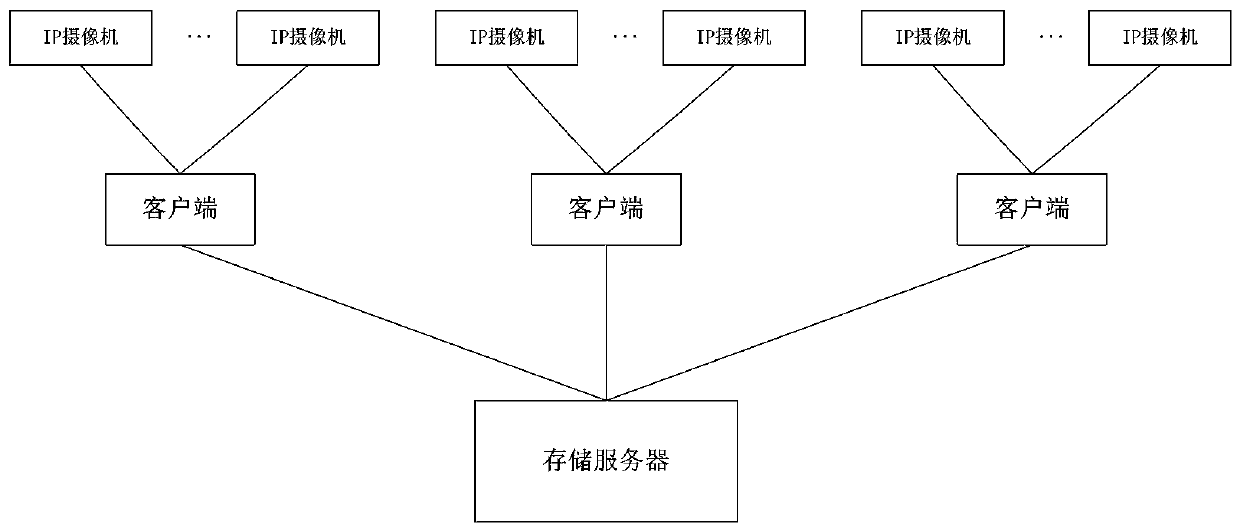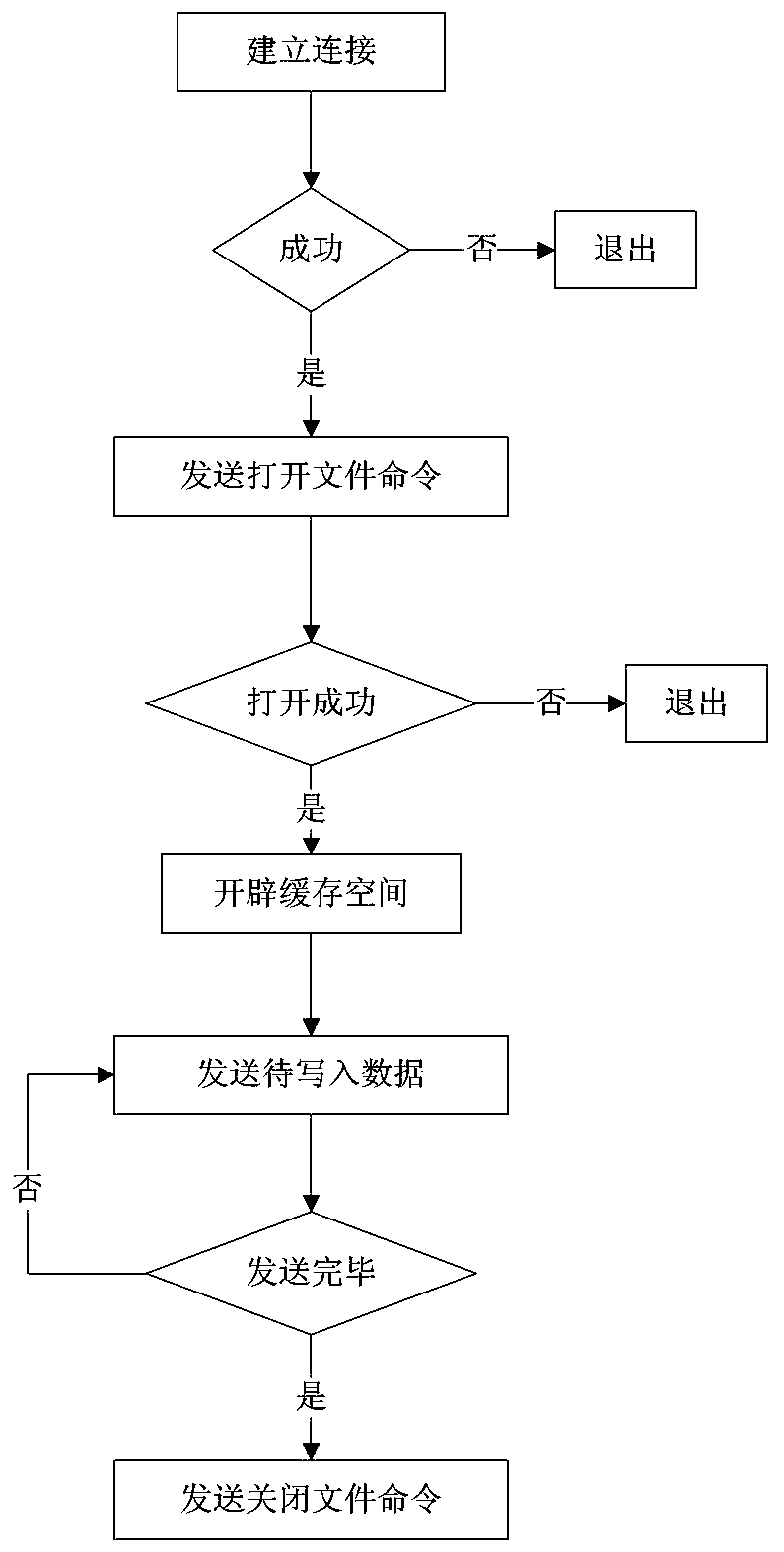Method for quickly receiving and storing data in shared file system
A technology for sharing files and receiving data. It is applied in file systems, transmission systems, file access structures, etc. It can solve the problems of NAS performance degradation, inability to guarantee real-time performance, and exhaustion of CPU resources, so as to break performance limitations and improve performance. Concurrent access efficiency, reducing the effect of page fault interruption
- Summary
- Abstract
- Description
- Claims
- Application Information
AI Technical Summary
Problems solved by technology
Method used
Image
Examples
Embodiment 1
[0040] This embodiment is a method for quickly receiving and storing data in a shared file system. The hardware system used in the method includes: multiple clients are connected to a Linux-based NAS subsystem through a LAN network, and the NAS subsystem The system includes a storage server and a storage disk array, and each client is connected to a plurality of IP cameras through a LAN network, such as figure 1 shown.
[0041]The above-mentioned client can be an ordinary PC workstation or a server, capable of connecting to a LAN network, and can collect video and audio data from video and audio sources. The LAN network described in this embodiment is composed of Ethernet switches and uses TCP / IP as the communication protocol. It is a broadband network with a bandwidth exceeding 1G and can transmit high-definition video files. The video and audio source is a high-definition IP camera, which can provide a large bit-rate high-definition video stream. The storage system is a Li...
Embodiment 2
[0053] This embodiment is an improvement of the first embodiment, and is a refinement of the "step of sending video and audio data" of the first embodiment. The "step of sending video and audio data" described in this embodiment includes the following sub-steps, the process is as follows: image 3 Shown:
[0054] The sub-steps of establishing a connection: the client sends a connection request to the storage server, and waits for the response from the storage server. If the connection is successful, enter the following sub-steps, otherwise exit.
[0055] The sub-step of sending the command to open the file: the client specifies the information to be written into the file, and sends it to the storage server according to the preset private transfer protocol, and waits for the response. If the file is opened successfully, enter the following sub-step, otherwise quit.
[0056] The sub-step of opening up the cache space: if the file is successfully opened, open up a cache space l...
Embodiment 3
[0060] This embodiment is an improvement of the above embodiment, and is a refinement of the "step of receiving video and audio data" of the above embodiment. The "step of receiving video and audio data" described in this embodiment includes the following sub-steps:
[0061] Substep of setting up huge page memory: Used for storage servers to set up the system to support huge page memory.
[0062] The sub-steps of PCI device initialization: the storage server scans PCI devices, registers PCI drivers, and uses Linux UIO technology to register the network card used to receive data as a UIO device, so that user-mode applications can directly use the network card to send or receive data.
[0063] The sub-step of creating a memory pool: the storage server applies for several fixed-size memory blocks in the huge page memory to form a memory pool for caching network packets.
[0064] The sub-step of initializing the data queue: it is used for the storage server to initialize 2 metada...
PUM
 Login to View More
Login to View More Abstract
Description
Claims
Application Information
 Login to View More
Login to View More - R&D
- Intellectual Property
- Life Sciences
- Materials
- Tech Scout
- Unparalleled Data Quality
- Higher Quality Content
- 60% Fewer Hallucinations
Browse by: Latest US Patents, China's latest patents, Technical Efficacy Thesaurus, Application Domain, Technology Topic, Popular Technical Reports.
© 2025 PatSnap. All rights reserved.Legal|Privacy policy|Modern Slavery Act Transparency Statement|Sitemap|About US| Contact US: help@patsnap.com



